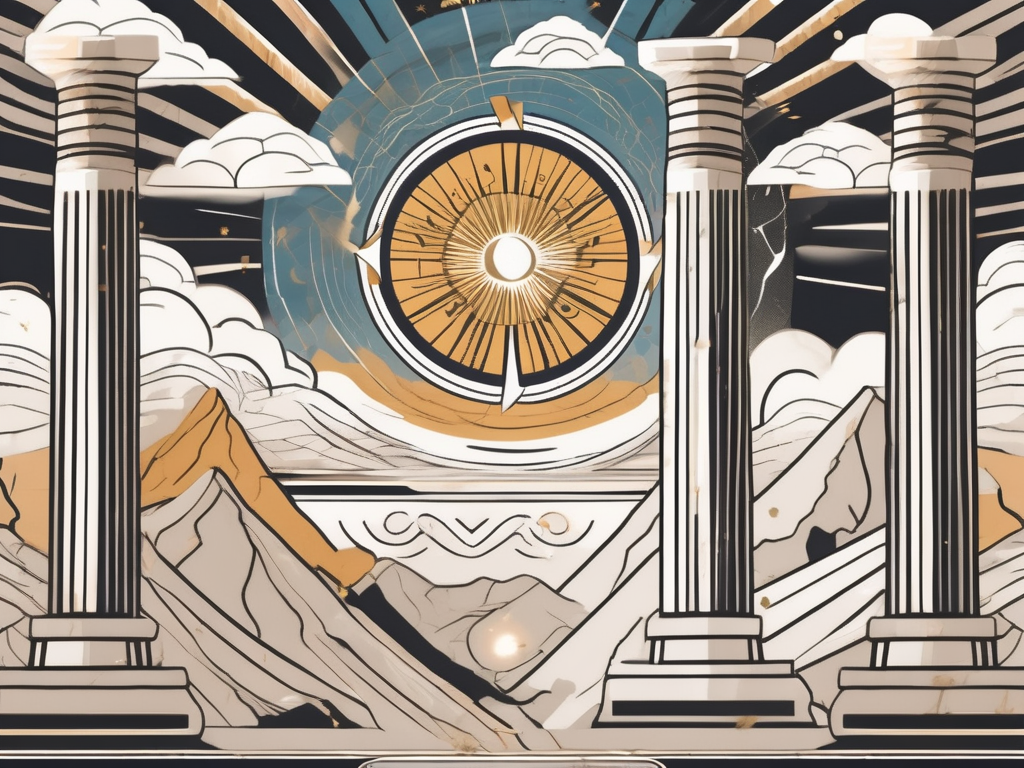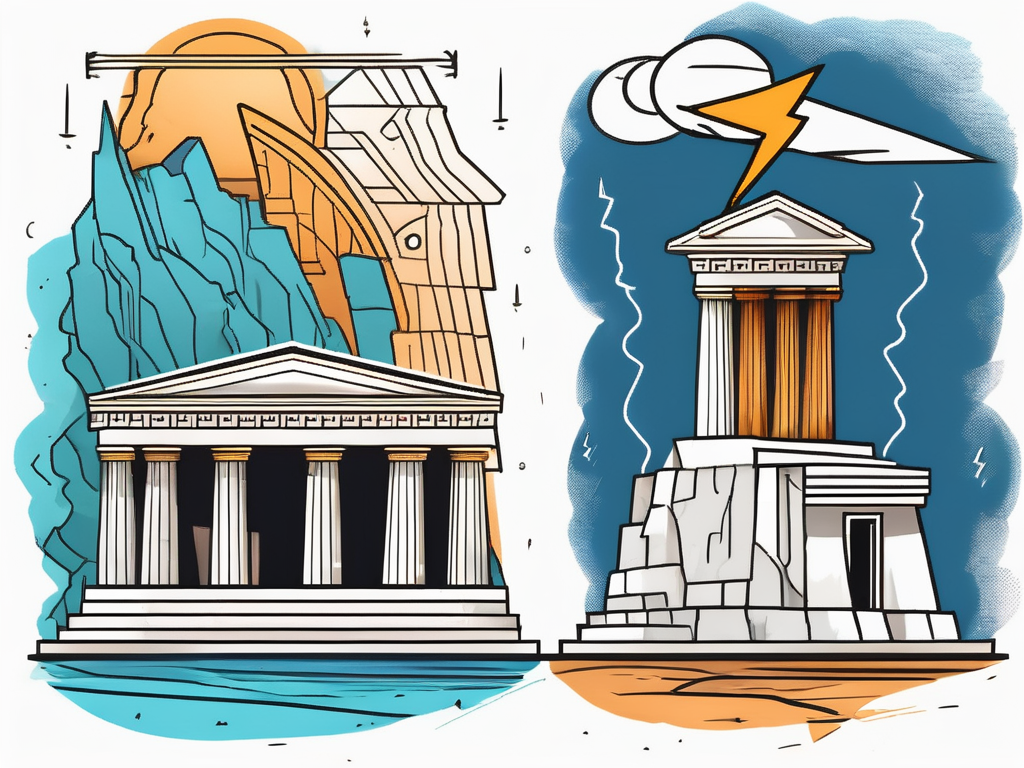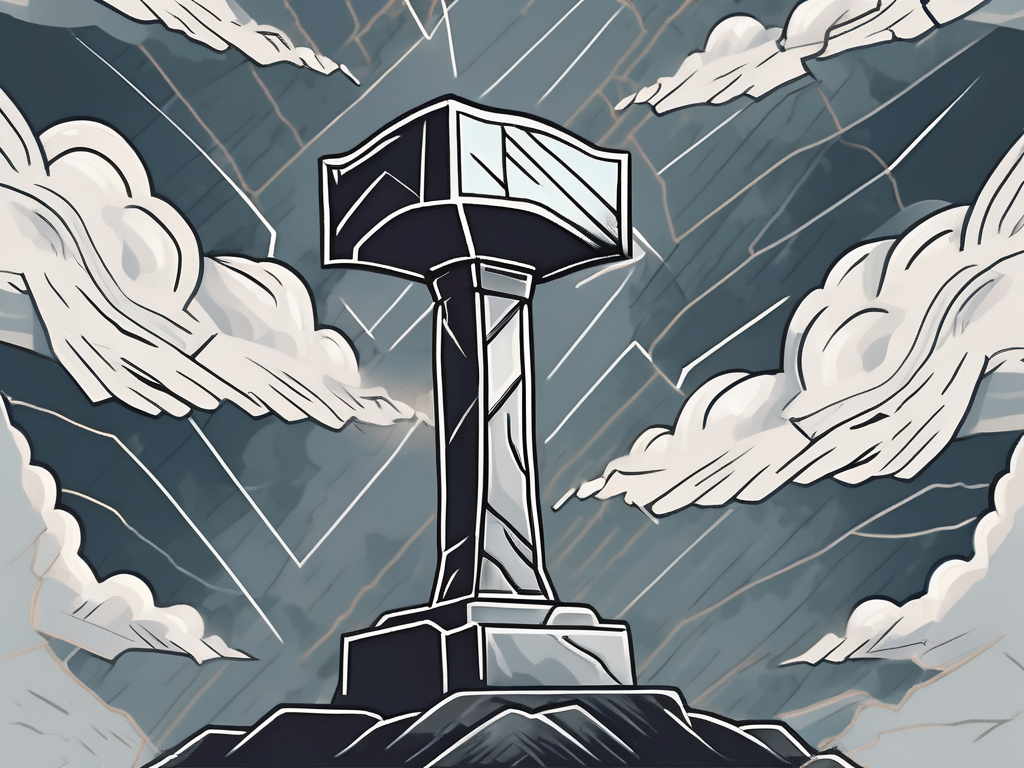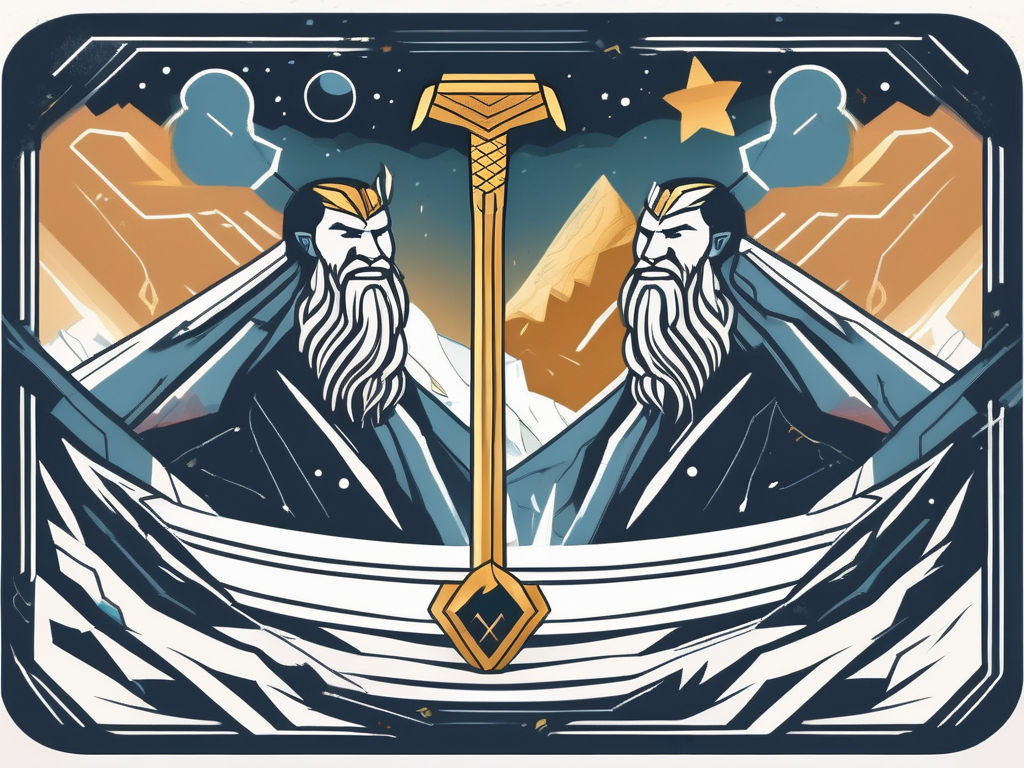Ancient Egypt, one of the oldest civilizations in history, is renowned for its rich mythology and fascinating pantheon of gods. At the heart of this pantheon lies the concept of ultimate power, embodied by a select group of deities. In this article, we will delve into the world of Egyptian gods and explore their roles, attributes, and influence on both the ancient civilization and modern culture.
Understanding the Pantheon of Egyptian Gods
Before we can truly grasp the peak of Egyptian godhood, we must first understand the intricate pantheon that governs it. The Egyptian gods, unlike many other pantheons, are organized in a strict hierarchical structure. At the apex of this divine hierarchy stands a few select deities who embody unparalleled power and authority.
These gods, known as the Ennead, are the most revered and influential among the Egyptian pantheon. Led by the mighty Ra, the sun god and king of the gods, the Ennead consists of nine major deities who each have a unique domain and role in ancient Egyptian society.
Let us delve deeper into the Ennead and explore the fascinating world of Egyptian mythology.
The Ennead: The Pinnacle of Divine Authority
The Ennead, as the highest level of Egyptian deities, hold immense power and influence over every aspect of life. Each member of the Ennead possesses a distinct personality and represents a specific concept or force of nature.
One of the most prominent members of the Ennead is Osiris, the god of the afterlife and the ruler of the underworld. Osiris is often depicted as a mummified figure, symbolizing his connection to death and rebirth. He ensures the souls of the deceased are guided safely into the afterlife and oversees the judgment of their souls.
Another significant deity within the Ennead is Isis, the goddess of magic and fertility. Isis is revered for her ability to heal the sick, protect the vulnerable, and assist in childbirth. She is often depicted with wings, symbolizing her role as a protective and nurturing figure.
These are just a few examples of the fascinating deities that make up the Ennead. Each god and goddess brings their unique powers and attributes to the pantheon, creating a rich tapestry of divine authority.
The Hierarchical Structure of Egyptian Deities
In Egyptian mythology, the gods are divided into various levels of power and influence. At the highest level are the Ennead, the nine primary gods who represent the pinnacle of divine authority. Below them are the lesser gods and goddesses who embody specific concepts or natural forces. This hierarchical structure reflects the organized nature of ancient Egyptian society, where power and authority were highly valued and strictly enforced.
Below the Ennead, there are numerous other gods and goddesses who play vital roles in Egyptian mythology. For example, Thoth, the god of wisdom and writing, is responsible for maintaining the balance of the universe and recording the deeds of the gods and humans. Hathor, the goddess of love and beauty, brings joy and happiness to the world with her enchanting music and dance.
These lesser gods and goddesses, while not as prominent as the Ennead, are still revered and worshipped by the ancient Egyptians. They represent the diverse aspects of life and nature, ensuring that every facet of existence is acknowledged and respected.
The Role and Influence of Gods in Ancient Egypt
In ancient Egypt, the gods were considered an integral part of everyday life. They played a crucial role in providing guidance, protection, and blessings to the pharaoh, the ruling class, and the general population. Egyptian society revolved around pleasing the gods through religious rituals and offerings, ensuring their favor and securing their divine blessings.
Furthermore, the gods were believed to control the natural forces that shaped the world. From the sun and the Nile River to fertility and war, each god had dominion over a particular aspect of life. The Egyptians sought their gods’ favor to ensure prosperous harvests, abundant fertility, and victory in times of conflict.
For example, the god Ra, as the sun god, was responsible for the rising and setting of the sun. His presence brought light and warmth to the world, ensuring the fertility of the land and the prosperity of the people. The Egyptians worshipped Ra fervently, offering prayers and sacrifices to ensure his continuous blessings.
Similarly, the goddess Bastet, the protector of home and family, was revered for her ability to ward off evil spirits and bring harmony to households. The Egyptians believed that by honoring Bastet, they could safeguard their homes and ensure the well-being of their loved ones.
As we can see, the gods held immense power and influence over every aspect of ancient Egyptian life. Their worship and reverence were deeply ingrained in the culture and society, shaping the beliefs and actions of the people.
In conclusion, the pantheon of Egyptian gods is a complex and fascinating system that reflects the organized structure of ancient Egyptian society. From the mighty Ennead to the lesser gods and goddesses, each deity played a crucial role in guiding, protecting, and blessing the people. The gods were not mere mythical figures but integral parts of everyday life, shaping the world and ensuring its harmony and prosperity.
The Concept of Ultimate Power in Ancient Egypt
In ancient Egypt, ultimate power was not merely a physical force, but a divine attribute that encompassed various aspects. The gods possessed extraordinary abilities and traits that set them apart from mortals, making them the epitome of power and authority.
The Divine Attributes of Power
Divine power in ancient Egyptian mythology was associated with a range of attributes. It encompassed strength, wisdom, knowledge, and the ability to control natural forces. One god who epitomized these qualities was Amun, the hidden one, who rose to become one of the most powerful gods in Egyptian mythology.
Another essential attribute of divine power was the ability to shape reality and control the forces of nature. The sun god, Ra, exemplified this ability as he commanded the sun across the sky, providing light and warmth to the world.
The Symbolism of Power in Egyptian Mythology
In addition to their divine attributes, Egyptian gods were associated with symbols that represented their power and authority. These symbols often took the form of animals or objects, offering a tangible representation of the god’s dominion.
For instance, the goddess Isis, known for her healing abilities, was often represented with a headdress featuring a throne, symbolizing her role as the Queen of the gods. Such symbols played a vital role in religious art and iconography, helping to visually convey the gods’ power and influence.
The Peak of Power: A Closer Look at the Most Powerful Egyptian Gods
While all Egyptian gods held significant power, there were a few whose influence stood above the rest. These gods were revered for their exceptional abilities and their impact on both Egyptian mythology and society.
Ra: The Sun God and King of the Gods
Ra, the mighty sun god, was not only the creator of all life but also the king of the gods. His radiance and power were unparalleled, and he was widely worshipped throughout ancient Egypt. Ra’s journey across the sky symbolized the eternal cycle of life and death, ensuring the continuation of the world and all living beings.
Amun: The Hidden One and His Rise to Power
Amun, initially a relatively obscure god, gradually rose to prominence and became one of the most revered gods in Egyptian mythology. The Egyptians believed that Amun resided in hidden places, infusing him with an air of mystery and power. As Amun’s popularity grew, he merged with the sun god Ra to become Amun-Ra, a symbol of both hidden wisdom and the life-giving force of the sun.
Isis: The Goddess of Magic and Healing
Isis, the goddess of magic and healing, was greatly admired for her wisdom and compassion. Often seen as the protector of the vulnerable and the patroness of fertility, Isis played a crucial role in ancient Egyptian religious practices. Her ability to heal the sick and bring life mirrored her tremendous power, making her highly regarded by both mortals and fellow gods.
The Legacy of Egyptian Gods in Modern Culture
Despite the passage of millennia, the influence of Egyptian gods continues to permeate modern culture. Their captivating mythology, rich symbolism, and timeless stories have left an indelible mark on literature, film, and various art forms.
The Influence of Egyptian Mythology in Literature and Film
Countless authors and filmmakers have drawn inspiration from Egyptian mythology to create captivating works. The adventures of brave archaeologists, like Indiana Jones, who unearth ancient Egyptian artifacts and explore long-lost temples, have become a staple of popular culture. From acclaimed novels to blockbuster movies, the allure of ancient Egypt and its gods continues to capture the imagination of audiences worldwide.
The Modern Interpretation of Ancient Egyptian Deities
Furthermore, Egyptian gods often make appearances in contemporary art, fashion, and even video games. Their distinctive symbols and imagery are frequently incorporated into various designs, allowing people to connect with the mysteries and power that these deities evoke. The enduring fascination with Egyptian gods serves as a testament to their timeless appeal and lasting impact on human culture.
Deciphering the Mysteries: Unveiling the Ultimate Power
To truly understand the peak of Egyptian godhood, it is essential to explore the methods ancient Egyptians employed to unlock the divine power of their deities. Two key elements played a significant role in this process: hieroglyphs and sacred structures.
The Role of Hieroglyphs in Understanding Divine Power
Hieroglyphs, the sacred Egyptian script, were more than just a means of communication; they served as a portal to the realm of gods. The meticulous inscriptions and intricate symbols allowed ancient Egyptians to preserve religious texts and rituals, enabling them to access the divine power associated with their gods.
The Significance of Temples and Pyramids in Worshiping Gods
In addition to hieroglyphs, the ancient Egyptian reverence for their gods was also reflected in the construction of temples and pyramids. These monumental structures were not only architectural marvels but also sacred spaces dedicated to the gods. Temples served as places of worship and ceremony, where the priests and devotees could communicate with the divine and receive blessings.
Pyramids, on the other hand, were elaborate tombs designed to ensure the eternal protection and divine journey of the pharaohs. These grand structures represented the power and authority of the gods, as well as the pharaoh’s close connection with the divine.
The Rituals and Ceremonies to Invoke Divine Power
Rituals and ceremonies played a crucial role in ancient Egyptian worship, allowing adherents to forge a connection with their gods and harness their divine power. These rituals often involved purification, offerings, prayers, and intricate performances. By meticulously following these practices, the Egyptians believed they could appease the gods, receive their blessings, and tap into the ultimate power they personified.
In conclusion, the Egyptian pantheon is a testament to the human fascination with ultimate power. Through their gods, the ancient Egyptians sought to understand and harness the divine forces that governed their lives. Today, the legacy of these gods lives on, their images and stories captivating people around the globe. As we explore the mysteries of ancient Egypt, we are reminded of the enduring power and influence that these deities hold over the imagination and hearts of humanity.












